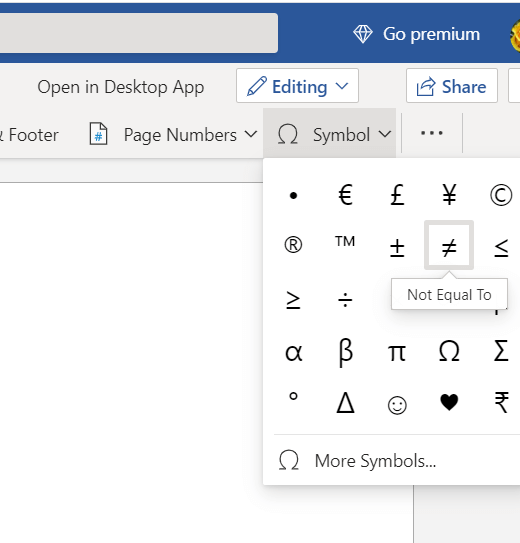

The AVERAGEIF function below calculates the average of the values in the range A1:A5 that are not equal to 0. This COUNTIFS function has 2 range/criteria pairs.ħ. The COUNTIFS function below counts the number of cells in the range A1:A5 that are not equal to "red" and not equal to "blue".Įxplanation: the COUNTIFS function in Excel counts cells based on two or more criteria. The & operator joins the 'not equal to' operator and the text value in cell C1.Ħ. The COUNTIF function below produces the exact same result. Note: visit our page about the COUNTIF function for more information about this Excel function.ĥ. The COUNTIF function below counts the number of cells in the range A1:A5 that are not equal to "red". Note: visit our page about the IF function for more information about this Excel function.Ĥ. The IF function below calculates the progress between a start and end value if the end value is not equal to an empty string (two double quotes with nothing in between), else it displays an empty string (see row 5). The formula in cell C1 below returns FALSE because the value in cell A1 is equal to the value in cell B1.ģ. Print ( a || b ) # logical OR consolidated for all elementsĪn example for each of the logical operators on Vectors is provided below. Print ( a & b ) # logical AND consolidated for all elements

Print ( a | b ) # logical OR element wise Print ( a & b ) # logical AND element wise

R_op_logical.R # R Operators - R Logical Operators Example for basic logical elements OperatorĪn example for each of the logical operators on Numerical values is provided below. Logical Operators in R programming language work only for the basic data types logical, numeric and complex and vectors of these basic data types. Output $ Rscript r_op_relational_vector.R R_op_relational_vector.R # R Operators - R Relational Operators Example for Numbers R_op_relational.R # R Operators - R Relational Operators Example for NumbersĪn example for each of the relational operator on Vectors is provided below. Is first operand not equal to second operandĪn example for each of the relational operator on Numberical values is provided below. Is first operand greater than or equal to second operand Is first operand greater than second operand Following are the six relational operations R programming language supports.The output is boolean (TRUE or FALSE) for all of the Relational Operators in R programming language. Relational Operators are those that find out relation between the two operands provided to them.

Output $ Rscript r_op_arithmetic_vector.R R_op_arithmetic_vector.R # R Operators - R Arithmetic Operators Example for vectors Ask Question Asked 8 years, 11 months ago. Using the not equal operator for string comparison. R_op_arithmetic.R # R Arithmetic Operators Example for integersĪn example for each of the arithmetic operator on Vectors is provided below. Anybody can ask a question Anybody can answer The best answers are voted up and rise to the top Sponsored by. Quotient from division of first operand with secondįirst operand raised to the power of second operandĪn example for each of the arithmetic operator on Numerical values is provided below. Remainder from division of first operand with second Vectors with these basic data types can also participate in arithmetic operations, during which the operation is performed on one to one element basis. They can be operated on the basic data types Numericals, Integers, Complex Numbers. Arithmetic Operators are used to accomplish arithmetic operations.


 0 kommentar(er)
0 kommentar(er)
